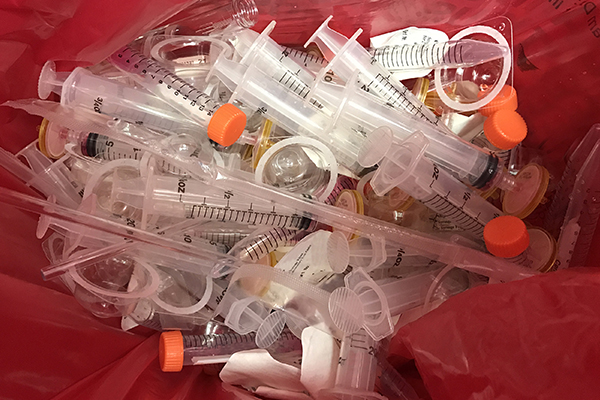Root Canal vs Filling: What’s the Difference?

Are you considering root canal vs filling? If you have a tooth with a damaged root, you likely have some concerns about what to do.
Many people have heard stories about root canals, and they picture painful surgery every time they hear the word. This isn’t always the case, but it can seem like a better alternative.
Perhaps you have a tooth that needs to be removed due to severe damage and you are weighing your options. Not sure what to choose? We have all the details you need to make an educated decision.
Table of Contents
Purpose
A root canal and filling are two distinct dental procedures that serve different purposes. A root canal is a surgical procedure that involves removing the infected or damaged pulp tissue from inside the root canal system of a tooth. This is necessary to prevent infection from spreading to other teeth or other parts of the body.
On the other hand, a filling is a specialized type of dental restoration used to replace or restore part of a tooth to its original shape and size. Fillings are used to repair cavities, restore cracks, and replace missing parts of the tooth structure.
The primary purpose of a root canal is to prevent further infection or damage while the purpose of a filling is to restore the tooth’s structure. Both procedures can help preserve a person’s healthy smile and can help maintain the overall health of the mouth.
Duration
While a root canal and filling both have the same goal to maintain a healthy and strong tooth structure, the treatment duration can be different because of the nature of the procedures. Root canals take around one to two hours to complete depending on the complexity of the procedure. They involve removing the root or pulp from the tooth which can be quite involved.
Fillings on the other hand, usually take a shorter time to complete. The damaged portion of the tooth is drilled out and the cavity is filled with a tooth-colored material.
Fillings usually only take anywhere between fifteen to thirty minutes, depending on the size of the filling. Therefore, root canals can generally take a longer period than traditional fillings.
Indications
Root canal treatment is indicated when the nerve and pulp of the tooth have been infected and need to be removed. For this, the dentist drills down to the root of the tooth, removes the infected parts, and then seals it off.
Filling, however, is used to fill cavities and repair cracked or chipped teeth. This requires the removal of decayed areas and then filling the cavity with a plastic or porcelain material.
Generally, both root canal and filling are recommended when the infection has already spread throughout the tooth and caused persistent pain or sensitivity. Depending on the severity of the infection, one of these treatments may be more indicated than the other.
Anesthesia
A root canal requires general anesthesia whereas a filling does not. General anesthesia is used to block all sensations and pain signals to the brain. It delivers a mild sedative that puts the patient into a deep sleep during the procedure. This of which can cause the patient to lose consciousness.
Fillings, require only a local anesthetic, meaning a numbing agent is injected near the affected tooth to block the sensation and related pain signals from that area. This allows the patient to remain conscious during the entire procedure, while also experiencing very little, if any, discomfort.
Recovery
Recovery of the root canal treatment is typically quicker and more comfortable than that of a filling. Following a root canal treatment, the affected tooth may take a few days to a week to fully recover and regain normal function.
Fillings typically take several days to heal, with mild soreness in the area. The majority of fillings have a shorter recovery period when compared to a root canal procedure. After a filling, you may experience some temperature sensitivity, but it typically subsides relatively quickly.
Aftercare
Aftercare of a root canal procedure is very important, the tooth needs to be monitored to make sure it heals correctly. The affected tooth needs to be taken care of with particular care to make sure it does not get worse.
Filling aftercare is much simpler, general oral hygiene is all that is required. Brushing and flossing regularly will help keep the filling in place. No further appointments are usually necessary for fillings, although they may be needed if the cavity worsens.
Medications
Medication after a root canal is often prescribed, such as antibiotics, pain relievers, and medications to help prevent infection. On the other hand, after a filling, the dentist may prescribe pain relief medications such as ibuprofen or acetaminophen to help subside soreness in the area.
They may also recommend a fluoride treatment to help strengthen the tooth in the area of the filling. Ultimately, the medications prescribed to patients after either procedure will vary. These depend on the individual case and their dentist’s recommendation.
To ensure the best results, make sure to visit your dentist for a consultation. If you happen to be in the area, you can try Fontana Dentist or any local dentists near you.
Know the Differences Between a Root Canal vs Filling
In conclusion, when it comes to choosing between a root canal vs filling, the best option depends on the individual’s needs. A filling works well for smaller cavities, while a root canal is necessary for more severe cases of decay.
You should consult with your dentist to determine which best suits your situation. Schedule an appointment today to find out more.
Should you wish to read more articles, visit our main blog page.



